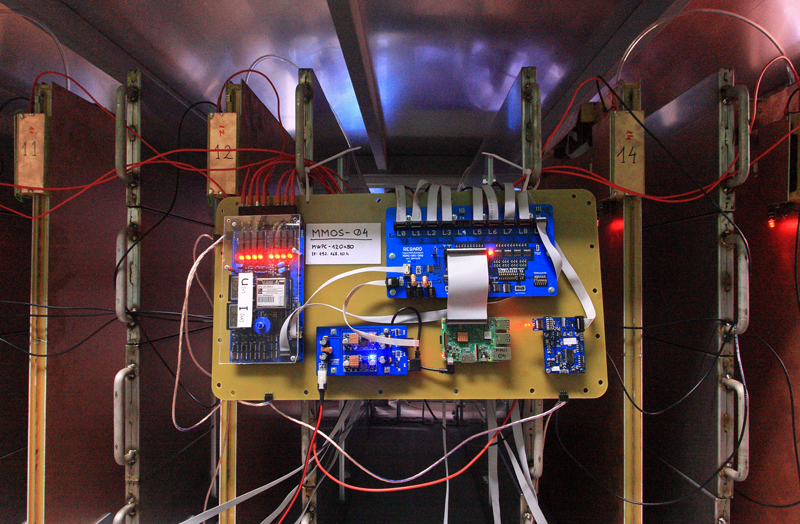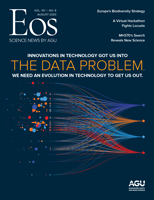Forecasting volcanic eruptions is notoriously challenging, but a team of Japanese scientists may have found a new method using relativistic particles from space.
A new pilot study, conducted on a highly active Japanese volcano, used a type of high-energy particle called a muon to map the interior structure of the volcano. When analyzed with machine learning algorithms, these maps could help diagnose when a volcano is about to blow. Thus far, the feasibility of the method has been examined on only one volcano, but it could eventually be more widely applied as the technique is further refined.
By placing specialized detectors that record muons passing through a volcano, scientists can use the particles to create more finely defined maps of the interior of a volcano than possible with previous techniques.
Eruption forecasting typically relies on volcanic gas emissions, surface changes, or seismography—which measures trembles in the ground that are often a precursor to eruptions. The new method instead took a visual approach and built on the imaging technique known as muography. First developed in the 1970s to map secret chambers in Egyptian pyramids, muography uses cosmic rays—high-energy particles originating on the Sun and across the galaxy—to map giant objects, similar to an oversized X-ray machine.
Cosmic rays continually rain down into Earth’s atmosphere from outer space. When they run into atmospheric particles, they decay into smaller components, including an elementary particle called a muon. Muons’ relatively high mass allows them to penetrate deeply into materials, even solid rock. By placing specialized detectors that record muons passing through a volcano, scientists can use the particles to create more finely defined maps of the interior of the volcano than possible with previous techniques.
For over a decade, scientists have been using muography to peer inside volcanoes around the world. The new work by the Japanese team, recently published in Scientific Reports, was the first effort to use muographic images to forecast eruptions.
Deep Learning
In medical imaging, scientists have applied a type of artificial intelligence called deep learning to X-ray images. Deep learning has been highly successful in identifying changes between images, tracking features such as cancer tumor growth. Since X-ray radiography and muography are conceptually similar, the scientists adapted a deep learning algorithm to analyze the volcano images. Although the specific type of deep learning they used—convolutional neural networks—has been previously used in the geosciences, it hadn’t been applied to muographic images.
The scientists applied the technique to the Sakurajima volcano, one of the most active in the world. (It has erupted 7,000 times in the past decade.) This stratovolcano, located in southern Kyushu, Japan, has been monitored by the Sakurajima Muography Observatory for 6 years, providing a wealth of historical data. Deep learning suffers from the need of an extensive library of images in which to train the algorithm, but the long timeline of data collection provided a sufficient set of images for calibration.

“For around 500 eruption events, daily muographic images were learned and interpreted by a machine for the 7 days [leading up to the eruption] to judge whether the eruption would occur or not on the following day,” said Hiroyuki Tanaka, a coauthor on the new study and a researcher at the Earthquake Research Institute and the International Muography Research Organization (MUOGRAPHIX) at the University of Tokyo.
The researchers’ results showed a correlation between the images and eruptions, which suggests that this technique could be used to forecast future eruptions. The method might also allow predictions more than a few days out, but that will require additional refinement of the technique.
Although this pilot study was conducted on only one volcano (Sakurajima), it has the potential to be extended to other volcanoes in the future.
Although this pilot study was conducted on only one volcano, it has the potential to be extended to other volcanoes in the future, though there are potential roadblocks. Deep learning works only for large data sets, which don’t yet exist for many volcanoes. And acquiring sufficient data requires a large number of eruptions, a limiting factor for volcanoes that aren’t as active as Sakurajima. But some scientists are hopeful that key features that can signal imminent eruptions can be identified from Sakurajima and applied to other, less active volcanoes. Procedures used in the new research could also be combined with existing methods to more fully study volcanic activity.
“Forecasting of a volcanic eruption rarely relies upon a single parameter, and therefore, the combined use of monitoring tools and forecasting methods is likely to give the ‘best’ outcome,” said Rebecca O. Salvage, a geophysicist and volcanologist at the University of Calgary. “Since Sakurajima has been well monitored for a long time, it would be interesting to see how muography compares to other, more traditional, monitoring techniques, such as seismicity, deformation, and gas emission, in terms of its ability to successfully forecast an eruption.”
—Mara Johnson-Groh ( [email protected]), Science Writer
Citation:
Johnson-Groh, M. (2020), Are cosmic rays a key to forecasting volcanic eruptions?, Eos, 101, https://doi.org/10.1029/2020EO142927. Published on 21 April 2020.
Text © 2020. The authors. CC BY-NC-ND 3.0
Except where otherwise noted, images are subject to copyright. Any reuse without express permission from the copyright owner is prohibited.


